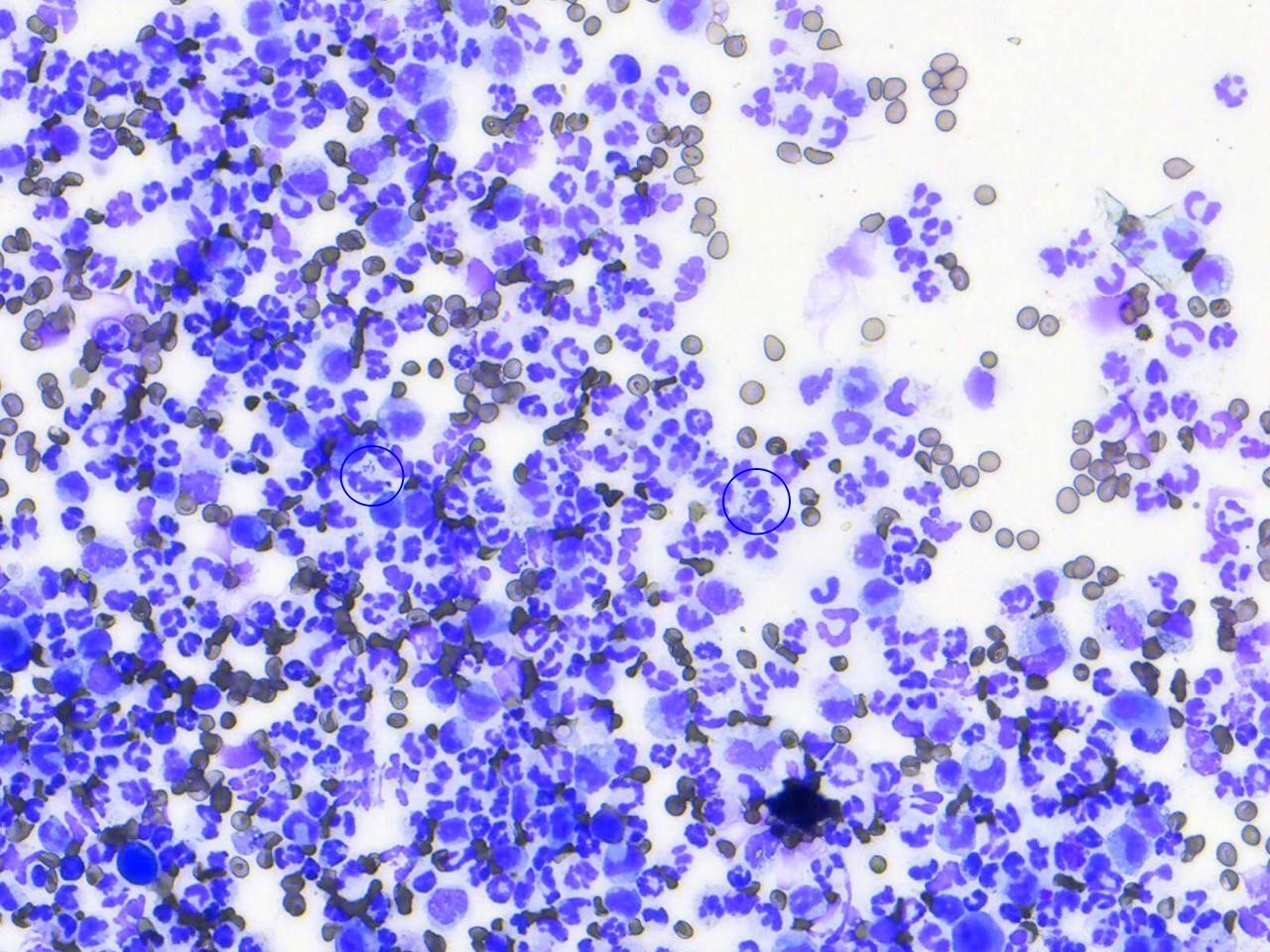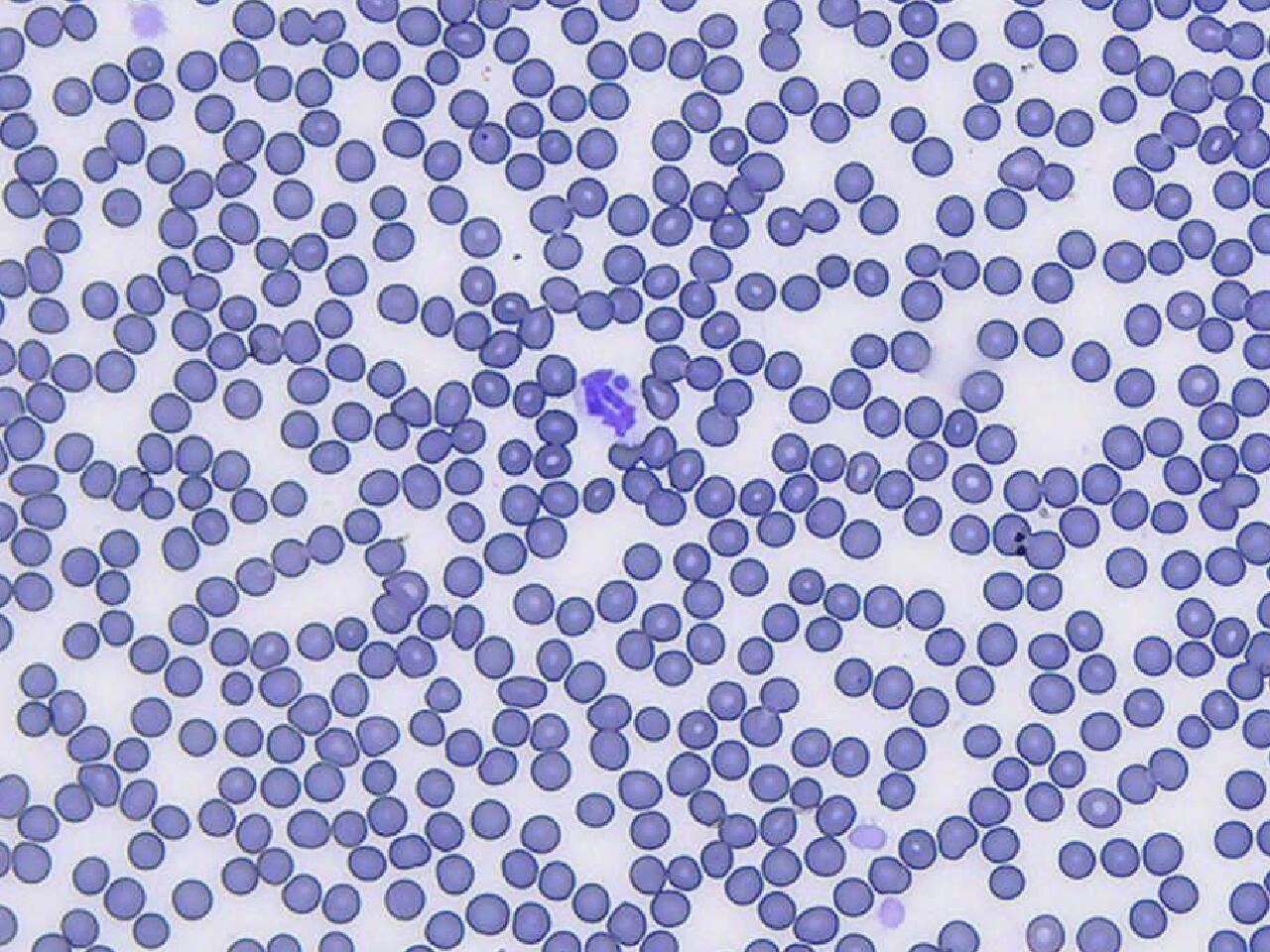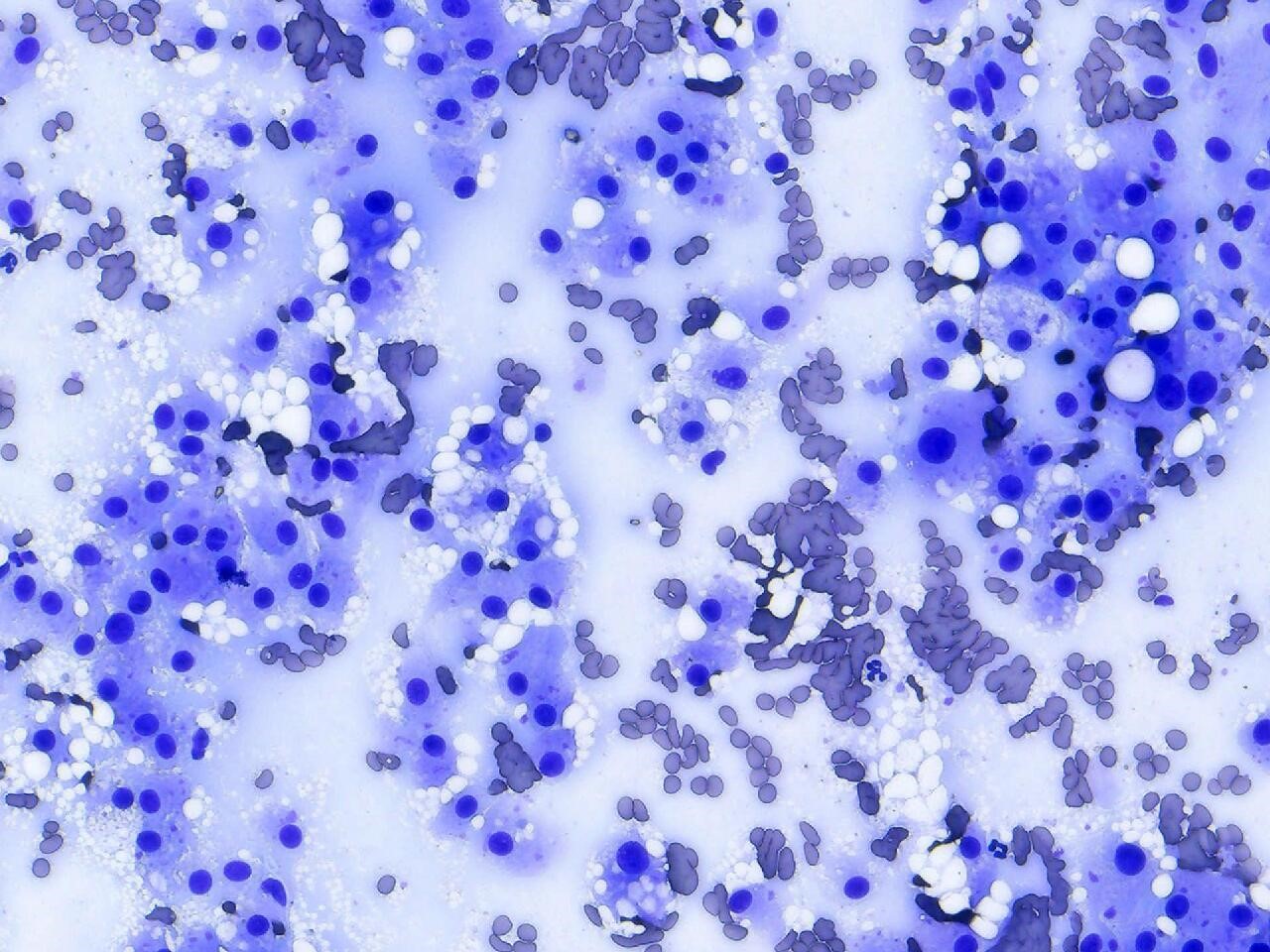Module 5: Introduction to Microbiology Stains
Module 5.1: Cytological Stains
Introduction to stains
There are myriad of stains that are available in veterinary medicine for the diagnosis of various diseases. These stains can be divided into two broad categories based on specific goals. These include those that are used for cytology or evaluating cellular morphology and microbial stains.
Cytological stains: Romanowsky type stain
In veterinary medicine, the most common cytological stains are Romanowsky-type stains, such as Diff Quik or Wright-Giemsa stains. The goal of cytological staining is to highlight cellular morphology, specifically nuclear and cytoplasmic details. While these stains do stain common microbes and can be especially useful for identifying protozoal, microfilaria, and fungal agents, these stains are particularly useful in characterizing host structures, such as inflammatory cells (neutrophils and macrophages), neoplastic cells, or resident cellular components. All bacteria, regardless if Gram-positive or negative stain blue or deep purple using Romanowsky types stains.



Procedure:
In the laboratory, you will be given step-by-step instructions on how to perform the Diff Quik procedure. Here is a video that also explains the steps.

